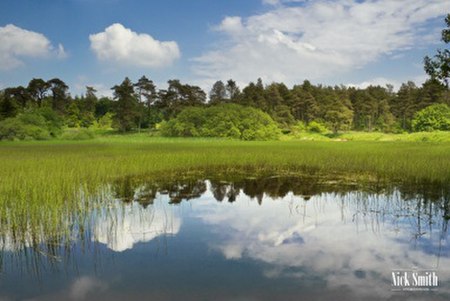Priddy Pools
Geology of SomersetMendip HillsSites of Special Scientific Interest in SomersetSites of Special Scientific Interest notified in 1972Wetland Sites of Special Scientific Interest

Priddy Pools (grid reference ST545510) is a 52.7-hectare (130-acre) geological Site of Special Scientific Interest at Priddy in the Mendip Hills, Somerset, notified in 1972. The pools provided the water supply for the Priddy Mineries which is now a Nature Reserve.
Excerpt from the Wikipedia article Priddy Pools (License: CC BY-SA 3.0, Authors, Images).Priddy Pools
Old Bristol Road, Mendip Chewton Mendip
Geographical coordinates (GPS) Address Nearby Places Show on map
Geographical coordinates (GPS)
| Latitude | Longitude |
|---|---|
| N 51.25634 ° | E -2.6534 ° |
Address
Priddy Mineries
Old Bristol Road
BA5 3AS Mendip, Chewton Mendip
England, United Kingdom
Open on Google Maps







